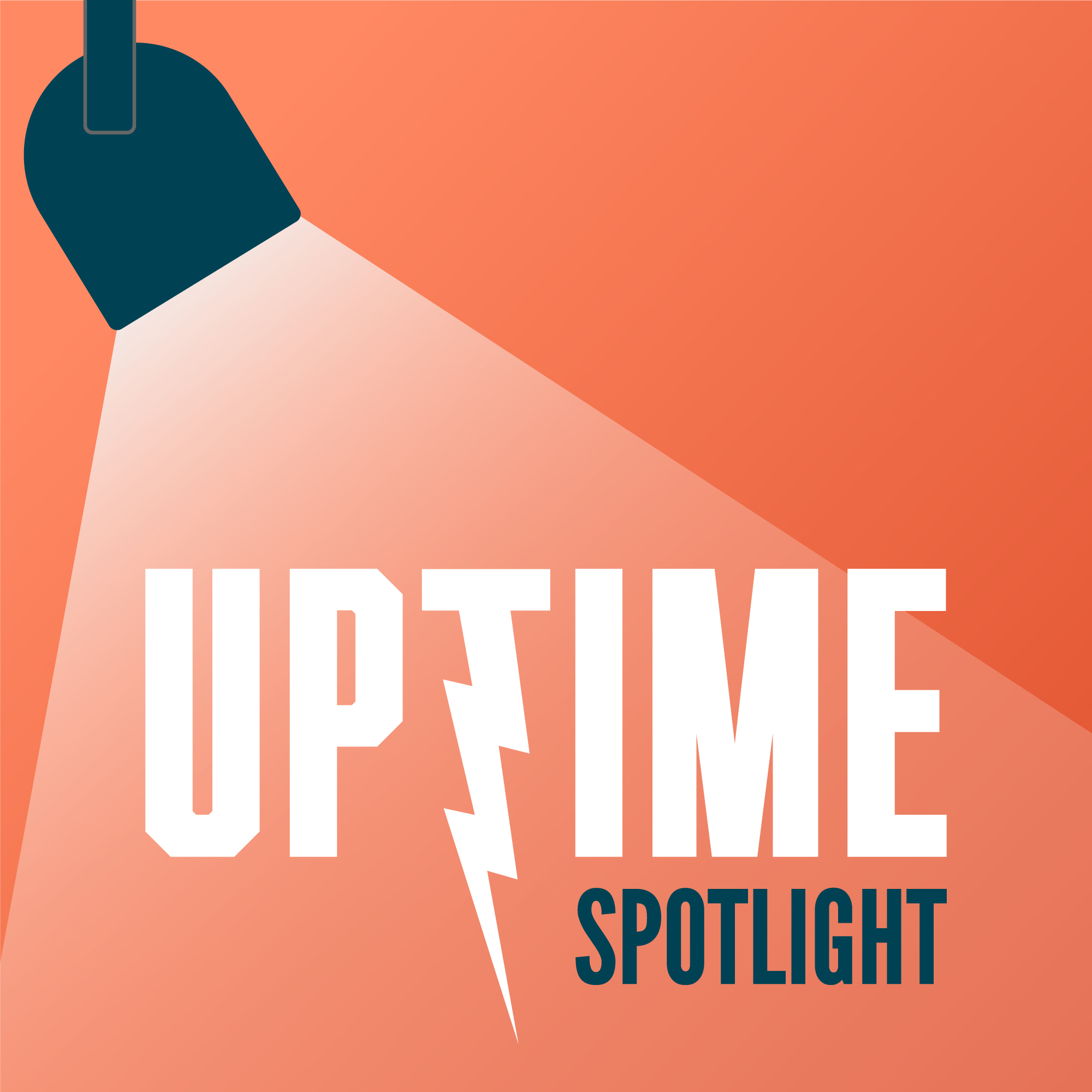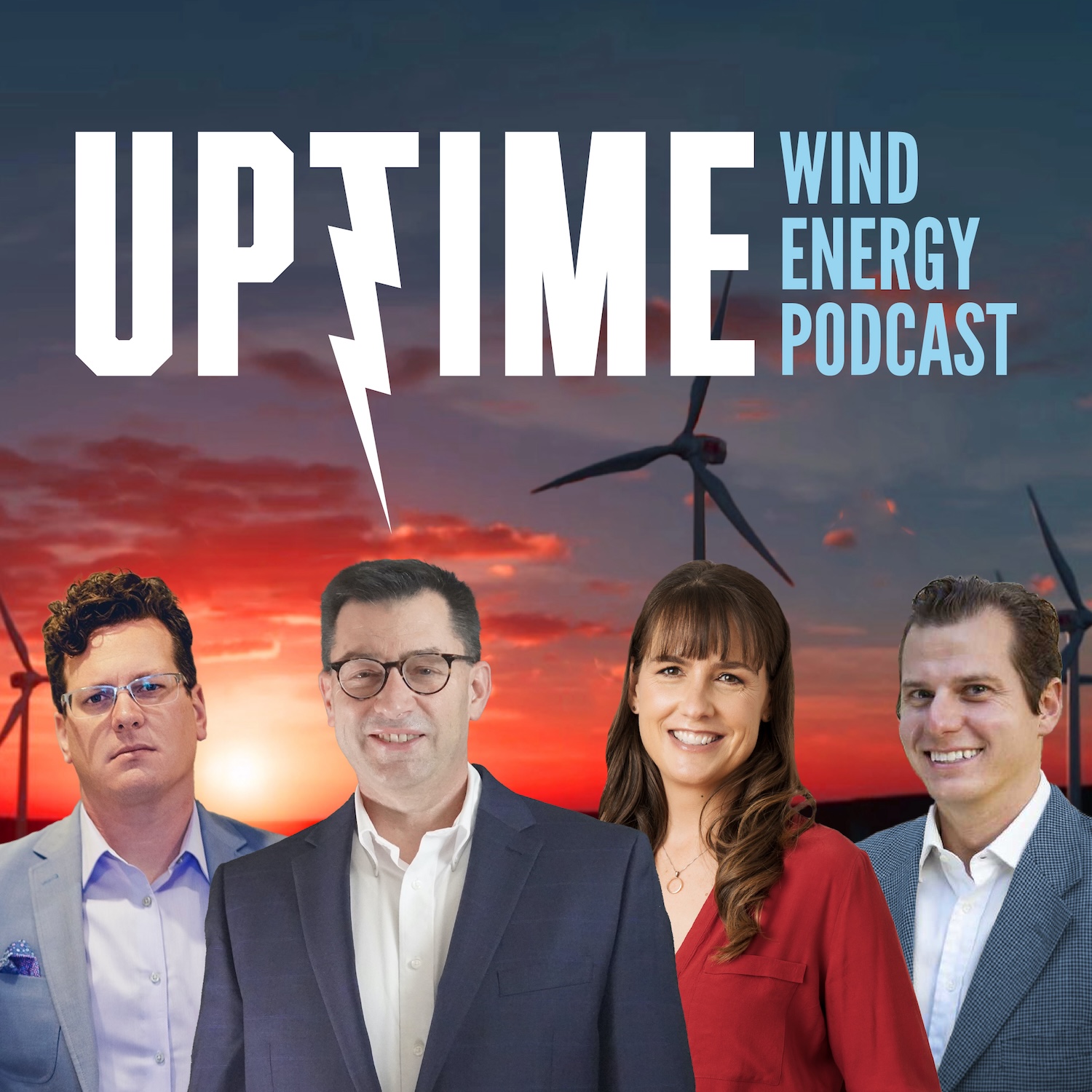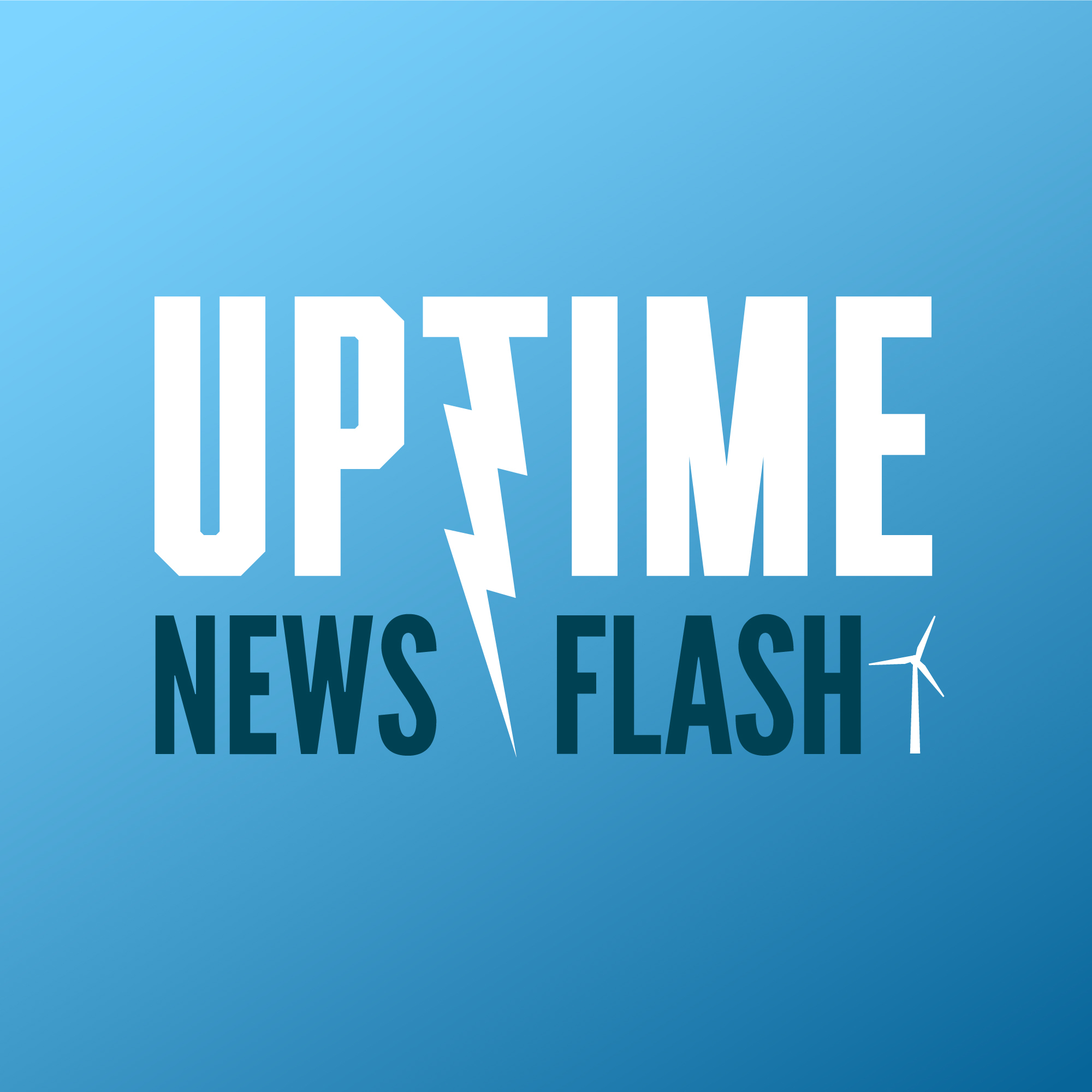Managing Renewables at Ørsted with Jewel Williams
Description
Jewel Williams, an engineering manager at Ørsted, shares insights about managing a diverse renewables portfolio and the distinct challenges of offshore and onshore wind. Leading operations of over 27 sites, containing wind, solar, and battery storage, Jewel showcases the skillset needed to successfully work in wind.
Sign up now for Uptime Tech News, our weekly email update on all things wind technology. This episode is sponsored by Weather Guard Lightning Tech. Learn more about Weather Guard’s StrikeTape Wind Turbine LPS retrofit. Follow the show on Facebook, YouTube, Twitter, Linkedin and visit Weather Guard on the web. And subscribe to Rosemary Barnes’ YouTube channel here. Have a question we can answer on the show? Email us!
Welcome to Uptime Spotlight, shining Light on Wind. Energy’s brightest innovators. This is the Progress Powering Tomorrow.
Allen Hall: Hey, Jewel, welcome to the program.
Jewel Williams: Hey, nice to be here.
Allen Hall: Well, we have a lot to talk to you about. You’re an engineering manager. In wind and uh, we know all the pressure that’s involved there just from the outside. Um, we’re not working in it day to day. Of course. I am really curious with all the recent changes of things that are happening on the ground, what is your day to day like right now?
Jewel Williams: Yeah. Uh, well, you know, it kind of depends on the day, of course. Uh, so, you know, in addition to wind, both in the onshore and offshore, we have, um, best solar and, uh, crane support on my team. So. Kind of depends on what’s, what today’s challenges are, what are the impending deadlines. [00:01:00 ] Um, so, you know, it could be compliance, it could be dealing with legal, it could be disputing an RCA or building an RCA it, it really just depends on the day.
Joel Saxum: I think we breezed over that one almost too quick when we were talking about wind engineering manager and we kind of said engineering manager, and then you went wind solar. Battery storage and then this wild card cranes, you know, when, when we speak with people in the industry, everybody’s busy. That’s, that’s the constant email you see back and forth.
Oh, sorry, I was a little bit late there. Thanks for your patience with this. We’re busy with this, we’re busy with that. I don’t think we’ve talked to anybody, Alan, that has like a complete renewables portfolio as an engineering manager. And then also cranes. We’re just gonna throw that in there. Um, so, so I have a net specialty.
I is, is it a lot of firefighting?
Jewel Williams: It, it can be. It can be. Ideally we are shifting towards the kind of reactive to the proactive, but you’re in operations and so a lot of times when work is hitting your desk, the first thing that [00:02:00 ] happens is a problem where failure and then the work comes to you. So in that case, like there’s certainly quite a bit of, uh, firefighting and you mentioned the cranes is a bit of a wild card.
I think that was one that. They weren’t quite sure where to put. And we had a good team and a decent people leader, and so they were said Jewel, hey, here’s a job description. We need you to hire a crane guy. And that was an interesting experience because I did not have the background to make the hire in the first place.
But it’s worked out really well. I’ve got an awesome guy to support.
Allen Hall: So how many people are on your staff At the minute?
Jewel Williams: Right now we have nine engineers.
Allen Hall: Okay. So you’re doing wind, best, solar, and cranes with nine people. How many wind farms, solar farms and best sites do you have altogether?
Jewel Williams: Altogether? 24.
Allen Hall: Wow.
Jewel Williams: So we have two onshore bests, uh, four solar, and the rest is winds. Uh, and then, uh, three of those are offshore wind sites.
Allen Hall: And how far scattered [00:03:00 ] about the country are they?
Jewel Williams: Well, they’re a little bit of everywhere, but I will say we have two regions. We have Texas and then we have central, and that means everything except for Texas.
So there’s a lot in Texas.
Joel Saxum: Well, then offshore as well. Right. That’s a, that’s a big, a big wild card to be, to be dealt with from an engineering side because. And I think in, in your organization, you guys are taking on the management of that yourselves as well, correct? There’s no, there’s no FSA here. This is self-perform.
Jewel Williams: Yeah, no, exactly. And for that reason, it’s um, pretty important to kind of know what skills you’re hiring for, I think in the offshore versus the onshore space, the offshore, like you mentioned, we are self performing and so. You need to, you’re gonna be handling all the data, you’re gonna be handling the drawings, you’re gonna be handling this really, uh, extremely technical, uh, level of information.
And the onshore, because you’re behind an ESA, um, you’re not gonna always, you know, you’re very rarely gonna have the [00:04:00 ] drawings. Uh, you’re gonna have oftentimes a little bit more limited data, and you’re gonna need to be a lot more commercially apt. To be able to kind of just handle the different day to day for that position.
So, but you just, we have everyone on the same team and it’s still working. Great.
Allen Hall: Talk about how old that offshore site is. It is what the oldest offshore site in America of, of any scale, right?
Jewel Williams: Yeah. Block Island Wind, um, is one of the, the oldest offshore sites. For the South Fork in Revolution, which I know revolutionists kind of transfer from construction to operation, but we still work with heavily.
Those are a little bit newer, but, um, walk Island Wind, what is it, 2017 COD.
Joel Saxum: Yeah, it’s been there for a little while, but it’s, it, it’s, it’s interesting concept too, because when you talk about offshore versus onshore wind, they’re two completely different animals and. Most companies around the world will have a dedicated offshore group.
This is, you guys do with this because the, the geotechnic, the cable lay stuff, the, the marine environment, [00:05:00 ] just working within that, like at, at the end of a day, like the, the ne inside the nelle is inside the nelle. It’s just larger scale, right. Uh, blades kind of the same thing, but there’s a lot of marine environment things that you don’t deal with.
And that’s a, that’s a specialty, right? I come from offshore oil and gas, like that is a special engineer. That usually is dedicated to that process because there’s little things there. That little, little problems turn into massive problems when you go offshore, commercially, economically. Right. And but also technically, so to that, you guys are covering that breadth of things.
It seems like, and we talked about this a little bit off air, to be on your team, to be on the Jewel team. Uh, you must be a kind of lots of, lots of pieces in your pie as a person to be able to ma maintain these things.
Jewel Williams: Yeah, no, absolutely. It, it is a wide scope and the two business cases are very different.
And even sometimes, you know, when we have our recap at the end of the year and we wanna talk about what was working well and what was not working well, we do need to break into the two [00:06:00 ] groups because these guys are, have a whole team, you know, the offshore team, they have a warranty team. They have. The global support functions that are working directly with them, because those guys are the offshore group where in the onshore you are your own warranty team and procurement and all these other things, and so your escalation path is different.
Your. Almost, you know, the technology is different as well, but I would say that that’s the easiest thing to translate back and forth. Uh, it gets more complicated when you start to bring in the, the moving parts, like you said, logistically.
Allen Hall: So how do you think about your team then? If you’re covering so many different areas at the same time, what approach are you taking?
Jewel Williams: Particularly I would say I took each role individually when I went to go and hire for that position. And you’re looking at this, what is this? Particular position needed in terms of skillset? Who’s the customer? What do they need to be? Uh, you know, what, how deep, what are the hard skills of the job? [00:07:00 ] Do they need to be able to be extremely nitty gritty, or do I need them to be somebody that can take that nitty gritty information to translate into a higher level content for sharing, you know, with the non-technical people, so.
Definitely had to take an individualized approach. And, um, for my team, I would say it makes it difficult for us to just always cover for each other. We can’t have the VTG engineer step in for the best engineer when they’re out because it’s just







